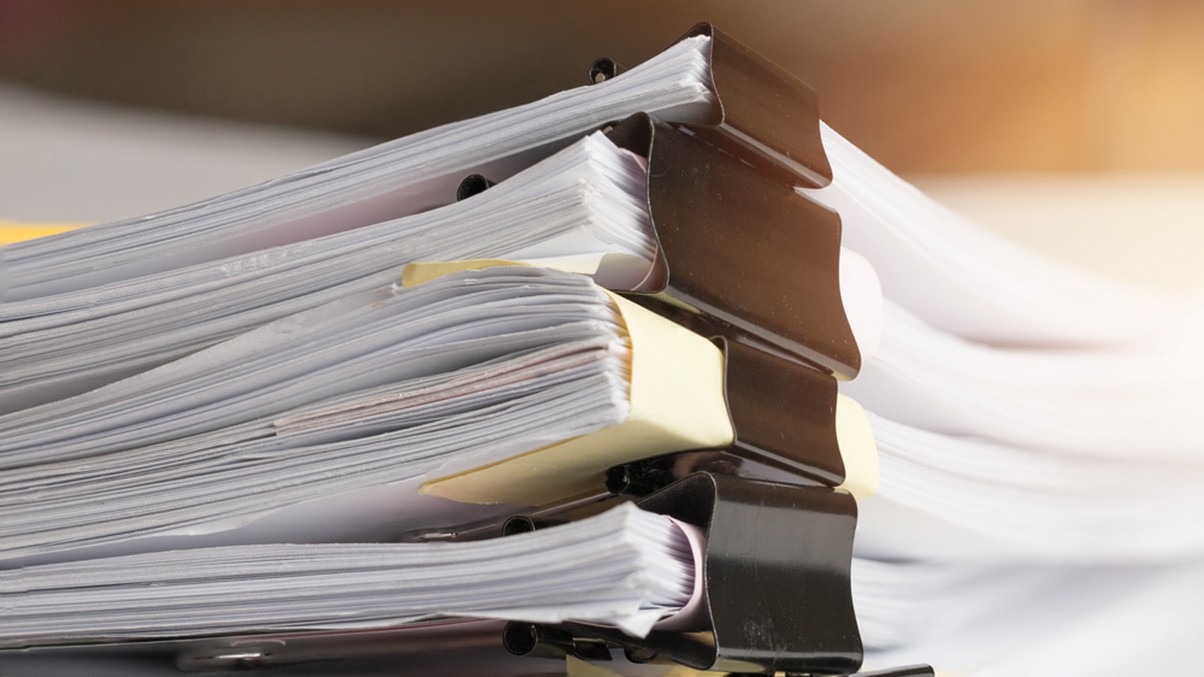In this article, first published in the 5 May edition of New Law Journal, senior associate and member of the disclosure working group responsible for drafting CPR PD 57AD Natalie Osafo sets out best practice, the court’s expectations and what lies ahead in the new landscape for disclosure.
The new rules in Practice Direction 57AD (PD57AD) are now a permanent fixture of the UK’s disclosure regime.
As we make headway into 2023, now is an apt time to review what the courts expect from parties litigating cases under the new regime. Under the pilot scheme, practitioners were given the benefit of the doubt if they breached the rules. But since the Chancellor of the High Court Sir Julian Flaux gave detailed guidance in January on PD57AD, we are already seeing judges respond with more severe sanctions for any deliberate breaches of the rules. Practitioners should familiarise themselves with disclosure under PD57AD including best practice, the court’s expectations and the future of disclosure. These elements are explored below.
Increase in digital data
The previous process under Part 31 of the Civil Procedure Rules (CPR) lacked structure, and the parties’ legal representatives often did not collaborate or adequately interact with each other. Considering the massive amounts of data created during the disclosure process, especially in complex cases involving multiple parties, this took up considerable time and resource.
The Chancellor highlighted this issue in his guidance on the PD57AD, quoting Vijay Rathour, the Head of the Digital Forensics Group at Grant Thornton and a member of the Disclosure Working Group, who said:
“Studies suggest that depending on data type, the volume of data generated and held by corporate clients is increasing by about 40% year on year and in recent years, especially due to the pandemic, the reliance on remote communication and home working technologies such as Microsoft Teams, Zoom and WhatsApp, has increased the variety of data as well as its volume… both of these challenges require different solutions. Data volumes are growing at a rate higher than the capacity of a human-only review team.”
To address this, PD57AD has built in the requirement that parties must consider using technology in cases likely to involve several thousands of documents, and if they do not, they must explain why to the court.
A fundamental culture change
Hopefully, one of the legacies of PD57AD will be a cultural change. Disclosure should now focus on the key issues on which documentary evidence is needed to fairly decide those issues, and the scope of disclosure should be limited to what is reasonable and proportionate.
The new rules emphasise that the role of the court is to supervise extended disclosure. Therefore, disclosure is not just left for the parties to deal with and requires genuine cooperation between parties to assist the court. Cooperation under PD57AD is not intended to eliminate adversarial engagement but rather to ensure that disclosure is workable and proportionate.
The manner in which the parties try to reach agreement on disclosure is important. It is not enough for parties to only attempt agreement via letters and emails; they must also talk directly to each other to try to resolve disagreements. This can be conducted in person or remotely, and the guidance in PD57AD recognises that video conferencing platforms may be used.
What the court expects of parties
In summary, the court’s expectations are:
- The parties demonstrating that there has been genuine engagement;
- The parties showing that they have understood the need for a proportionate approach to disclosure;
- A clear methodology underpinning the approach to disclosure, with regard to the likely sources of documents;
- Limited differences for the court to resolve at the case management conference (CMC), with parties seeking early guidance from the court if necessary.
The parties should be prepared to demonstrate they have met these requirements at the CMC. This is usually the first court hearing in a claim, at which the court decides the steps and timetable for the case and resolves any major disagreements about disclosure.
PD57AD helpfully provides a structure for the parties to discuss and agree the disclosure for the case. Recognising that this is often difficult in litigation where the parties’ positions are fundamentally opposed to each other, it is essential to consider disclosure early on.
Parties should consider the following factors at the outset of a case:
- What documents need to be preserved?
- What documents need to be reviewed to enable parties to obtain advice about the claim or its defence?
- What are the likely issues, or what issues have been identified in pre-action correspondence?
- What are the likely sources of data and are they hard copy or electronic? Will electronic searches be required and when? Are documents held on several devices or servers? Are documents held at multiple sites or across different jurisdictions?
- Does one party hold the majority of the documents to be searched and disclosed?
- What is the likely nature and volume of data that may need to be searched and reviewed?
- Should an e-disclosure provider be appointed and at what stage in the case?
- Is the Less Complex Claims regime suitable?
Disclosure Issues
Drafting lengthy, detailed disclosure issues leads to excessive and unnecessary complexity, making it difficult for parties to agree on the issues. There will be limited circumstances in which the courts will accept such lists of disclosure as necessary, and disclosure issues should in most cases be ‘short and concise’.
Additionally, parties should bear in mind that even after agreeing the issues for disclosure and ordering extended disclosure, those issues are not set in stone and they can be amended. Moreover, if there are wide discrepancies between the parties on the disclosure issues then the court can give guidance without a hearing (see paragraph 11 of PD57AD). There are advantages to seeking early guidance from the court: it will save costs and time at the CMC to focus on other issues, and does not come with the adverse costs risk of applying for a court order or a formal determination.
Disclosure Models
A party should ask themselves two main questions to help decide which disclosure model to match against a disclosure issue:
- What type and sources of documents are likely to exist?
- What types of issues are the parties dealing with?
Further matters to consider include the importance of the issue and whether the issue is in fact an issue of law or a matter for witness evidence. It is also worth reviewing whether disclosing narrative documents is justified: narrative documents are not directly relevant to disclosure issues, but only to the background or context of material facts or events.
Parties should not use Model C requests as a ‘strategic weapon’, which is still occurring in some cases. This model is not for lengthy, granular requests for documents, but for easily identifiable narrow classes of documents. Parties who continue to misuse the model risk being refused an order for that model of disclosure or being sanctioned by the court.
Section 2 of the Disclosure Review Document
One of the criticisms of PD57AD has been that it frontloads work and costs. In particular, where extended disclosure is being sought, parties must complete and file additional documents with the court before the CMC. However adopting the approach set out in the practice direction is good practice – litigation is not a linear process.
A potential way to reduce costs and complexity is to focus on section 2 of the Disclosure Review Document (DRD), where the parties exchange essential information and make proposals for their own and their opposing parties’ disclosure.
Parties need to consider the universe of documents which must be searched and which data sources, companies and individuals to collect or request documents from, as well as what searches to run and whether to use technology and how. Parties must also give cost estimates for the disclosure exercise.
Sanctions
Paragraph 20 of PD57AD gives the court power to impose sanctions if a party breaches its disclosure obligations.
Likely sanctions could include:
- the court adjourning the CMC;
- ordering the party at fault to pay the costs of the other party;
- disallowing the defaulting party to recover its costs for preparing the DRD from the other party, and;
- asking the parties to revisit completing the DRD.
Where there very serious breaches the courts may impose even harsher sanctions. A recent example of this is the case of Mozambique v Credit Suisse International [2022] EWHC 3054 (Comm). In response to the Republic of Mozambique’s failure to comply with its disclosure duties Mr Justice Robin Knowles CBE ordered the Republic and its lawyers to submit a plan to the court for giving fresh disclosure in the case and to carry a ‘full forensic investigation’ of an email account.
Comments
The new disclosure regime is an opportunity to solidify the UK’s reputation as a popular destination for litigating business disputes. One of the main attractions of the UK regime, which has been preserved in PD57AD, is the requirement for an opponent to disclose documents whether they are harmful or helpful to their case. However, an unnecessarily aggressive approach to disclosure risks undermining the other benefits mentioned above.
The new rules underpin the importance of engaging lawyers who can achieve good outcomes on disclosure for their clients whilst engaging constructively with the other side. This should not be underestimated.
It is not an option for parties (or their legal teams) to ignore or claim they are not familiar with the rules, which have been extensively piloted for nearly four years before coming into effect as PD57AD. The courts have made clear that non-compliance will be punished, but if there have been genuine efforts to resolve any disclosure issues and the parties have acted in good faith then the court is unlikely to resort to sanctions.
The future for disclosure in the UK will be as bright as the legal profession enables it to be. The question that remains to be answered is whether PD57AD can bring about the necessary cultural change to achieve this.
You can find further information regarding our expertise, experience and team on our Commercial Litigation page.
If you require assistance from our team, please contact us or alternatively request a call back from one of our lawyers by submitting this form.
Subscribe – In order to receive our news straight to your inbox, subscribe here. Our newsletters are sent no more than once a month.





